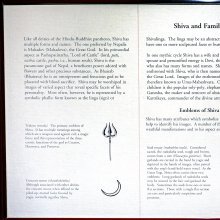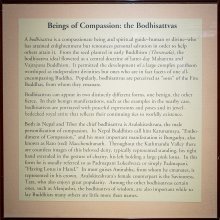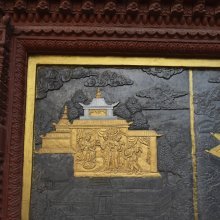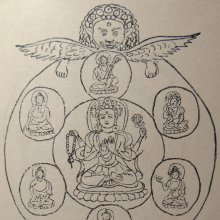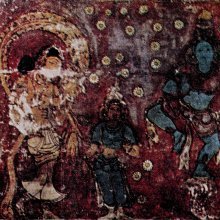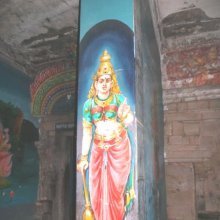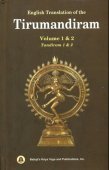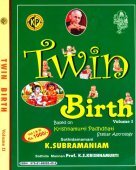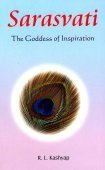One: 2 definitions
Introduction:
One means something in Hinduism, Sanskrit. If you want to know the exact meaning, history, etymology or English translation of this term then check out the descriptions on this page. Add your comment or reference to a book if you want to contribute to this summary article.
Images (photo gallery)
(+1122 more images available)
In Hinduism
Natyashastra (theatrics and dramaturgy)
Source: Shodhganga: Elements of Art and Architecture in the Trtiyakhanda of the Visnudharmottarapurana (natya)The number One associated with Sūcyāsyahasta: one of the twenty-two Single-hand Gestures (in Indian Dramas) (known as asaṃyuktahastas), according to the Viṣṇudharmottarapurāṇa, an ancient Sanskrit text which (being encyclopedic in nature) deals with a variety of cultural topics such as arts, architecture, music, grammar and astronomy.—The word sūcī means a tool which is used for stitching. It refers to the needle. [...] In the Abhinayadarpaṇa, numbers like one and hundred are shown with the sūcyāsya-hasta posture. Paramabrahma i.e., the Supreme Entity is also indicated with this hand posture. Moreover, this hand posture also indicates the sun and a city.

Natyashastra (नाट्यशास्त्र, nāṭyaśāstra) refers to both the ancient Indian tradition (shastra) of performing arts, (natya—theatrics, drama, dance, music), as well as the name of a Sanskrit work dealing with these subjects. It also teaches the rules for composing Dramatic plays (nataka), construction and performance of Theater, and Poetic works (kavya).
Languages of India and abroad
Kannada-English dictionary
Source: Alar: Kannada-English corpusOne (ಒನೆ):—
1) [verb] to expose (grain etc.) to the wind or to a current of air so that unwanted lighter particles of chaff etc. are separated or blown away; to clear of waste material in this way; to winnow.
2) [verb] to move or swing back and forth; to dangle; to shake (oneself).
3) [verb] to cause to move back and forth; to cause to vibrate; to shake.
4) [verb] to fascinate or charm by affected manners or behaviours.
5) [verb] ಒನೆದಾಡು [onedadu] onedāḍu to move back and forth; 2. to behave coquettishly; to flirt.
Kannada is a Dravidian language (as opposed to the Indo-European language family) mainly spoken in the southwestern region of India.
See also (Relevant definitions)
Starts with (+7): Knower of brahma, One Buddha Vehicle, One kilangu, One Pointedness Of Mind, One-flowered bluebeard, One-flowered pyrola, One-flowered shin-leaf, One-pointedness, One-seed hawthorn, One-seeded croton, One-seeded hawthorn, One-seeded juniper, One-side pyrola, One-sided wintergreen, One-storey, Oneflower bedstraw, Oneflowered wintergreen, Onegai, Onei, Onejja.
Query error!
Full-text (+80099): Shankha, Kala, Brahma, Vishnu, Padma, Krishna, Yama, Vijaya, Surya, Varuna, Vamana, Eka, Dharma, Nila, Agni, Pingala, Jaya, Bhadra, Makara, Citra.
Relevant text
Search found 679 books and stories containing One, The one; (plurals include: Ones, The ones). You can also click to the full overview containing English textual excerpts. Below are direct links for the most relevant articles:
Shurangama Sutra (with commentary) (English) (by Hsuan Hua)
The skandha of activity < [Chapter 2 - The Five Skandhas]
Manjushri seeks aid and generally concludes < [Chapter 3 - Manjushri Selects the Organ of Entry]
The appropriate individuals able to receive the teaching < [Chapter 1 - The Ten Doors of Discrimination]
Philosophy of language in the Five Nikayas (by K.T.S. Sarao)
2.5(e). Aṅguttara Nikāya (Numerical Discourses of the Buddha) < [Chapter 1 - Introduction]
13. Development and Cultivation of the Four Immeasurable Minds < [Chapter 4 - Philosophy of Language in the Five Nikāyas]
1. Preliminary < [Chapter 2 - Concept of Philosophy of Language]
The Madness of Manini < [September-October, 1929]
Against Our Dream of Land Beyond the Earth < [July – September, 2003]
Encountering Death < [April – June, 1984]
Trishashti Shalaka Purusha Caritra (by Helen M. Johnson)
Part 6: Kalkin < [Chapter XIII - Śrī Mahāvīra’s nirvāṇa]
Part 4: Birth of Ananta and his birth-rites < [Chapter IV - Anantanāthacaritra]
Part 5: Pārśva’s mokṣa (emancipation) < [Chapter IV - The wandering and emancipation of Pārśvanātha]
Cidgaganacandrika (study) (by S. Mahalakshmi)
Verse 28 [The State of Śivā in Cidākāśa] < [Chapter 2 - Second Vimarśa]
Verse 272 [Kālidāsa’s Cidgaganacandrikā is for getting the grace of Kāli] < [Chapter 4 - Fourth Vimarśa]
Verse 235 [Yama is the consecrated King] < [Chapter 4 - Fourth Vimarśa]
Brihat Jataka by Varahamihira [Sanskrit/English] (by Michael D Neely)
Verse 6.10 < [Chapter 7 - Length of Life]
Verse 1.15 < [Chapter 1 - Zodiac Signs]
Verse 3.5 < [Chapter 3 - On the Manifold Births]
Related products
(+264 more products available)
